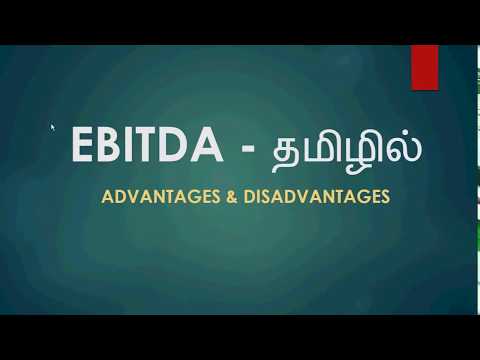Tangible Assets Overview of Physical Items of Value for Business

Some intangible assets like goodwill and reputation are unidentifiable assets — resources that can’t be separated from the company and can’t be sold to pay a debt. Additionally, the accounting treatment of value loss is different for tangible and intangible assets. Most tangible assets have a physical form, while intangible assets don’t. A company records its tangible assets on the assets section of its balance sheet — a financial statement that consolidates all company assets, liabilities, and shareholders’ equity. Tangible assets are items of value that a business owns that you can touch or feel.
Not all intangible assets can be amortized—only those with a finite useful life, which refers to the set amount of time you own an intangible asset. In the US, that patent likely has a finite useful life of 20 years, after which it expires. Current tangible assets are liquid or short-term items converted into cash equivalents without a hitch (currency, inventory, accounts receivable, etc.). The conversion process of these tangible assets usually takes less than one year, which allows raising funds if needed.
What is a Tangible Asset?
But just because you can’t touch them doesn’t mean you can’t understand them. Let’s take a close look at what intangible assets are, how to calculate their value, and how to account for them in your financial documents. For example, understanding which assets are current assets and which are fixed assets is important in understanding the net working capital of a company. In the scenario of a company in a high-risk industry, understanding which assets are tangible and intangible helps to assess its solvency and risk. Due to reduced liquidity of intangible assets, a company may not turn intangible assets into cash on time to pay back debts. A current asset is one that a company expects to fully consume in less than a year or turns it into cash within a year.
9 Bruins thoughts as offseason comes to a close – 98.5 The Sports Hub
9 Bruins thoughts as offseason comes to a close.
Posted: Mon, 04 Sep 2023 23:25:41 GMT [source]
The most notable examples of long-term assets are corporate buildings, offices, land property, and specific equipment. A company uses depreciation to record the loss in value or use of a long-term tangible asset over a period. Alternatively, a company uses amortization to spread the loss in value or expense of intangible assets over a period. Intangible assets add to a company’s possible future worth and can be much more valuable than its tangible assets. As tangible current assets are easily convertible to cash, they make provision for liquidity to the business thereby reducing risk. As long as the value of the assets that a business owns is greater than the money risked in acquiring them, a business typically remains safe and solvent.
Replacement cost method
Government agencies often have guidance and limitations to what may be considered tangible assets. It may also choose to segregate tangible assets by category such as California’s State Administrative Manual. Sometimes incorrectly referred to as return on tangible assets, return on net assets (RONA) measures how well your business is using its assets. The higher your return on net assets, the better your business is performing. When you depreciate your assets, you must list the expense on your company’s small business income statement. Inventory, for example, is a tangible asset that when used in the production process, becomes included in the cost of goods sold for a company.
First-of-its-kind enforcement action sparks debate whether NFTs are … – JD Supra
First-of-its-kind enforcement action sparks debate whether NFTs are ….
Posted: Thu, 31 Aug 2023 19:29:50 GMT [source]
Goodwill
refers to the value of certain favorable factors that a business
possesses that allows it to generate a greater rate of return or
profit. Such factors include superior management, a skilled
workforce, quality products or service, great geographic location,
and overall reputation. Companies typically record goodwill when
they acquire another business in which the purchase price is in
excess of the fair value of the identifiable net assets.
The importance of tangible asset management
The nature of the organization should help you determine what an organization should or shouldn’t own. All oil and gas companies have a number of tangible assets at their disposal for carrying out their daily activities. Entities operating in the drilling and exploration segment have several tangible assets like drilling equipment and oil rigs. In other words, figure out the value of your net tangible assets by subtracting your assets from your liabilities, then subtracting that number from the market value of your business. Your cousin started her own business and wants to get a small
loan from a local bank to expand production in the next year. The
bank has asked her to prepare a balance sheet, and she is having
trouble classifying the assets properly.
- The net worth and core operations of a business are highly dependent upon its assets.
- Though these things possibly have a chance of being financially beneficial at a future point, they are not currently something that can be sold for great profit in most cases.
- Simply put, assets are anything of value that a company, person, or other entity owns that could be exchanged for cash.
- Tangible assets hold “real” value; buildings can be occupied, land can be utilized, and machinery can be used.
- Government agencies often have guidance and limitations to what may be considered tangible assets.
- Current assets can be defined as assets that are useful for a business for a short time frame.
Insurers generally use replacement cost as the basis for determining what a building is worth. Investors and lenders want to know your business’s worth before giving you money. If you are trying to obtain an investment or loan, you need to know the value of your business’s assets. A tangible asset’s useful life is the duration it adds to your business’s value.
🤔 Understanding a tangible asset
As earlier pointed out, tangible assets are needed for the daily operations of every business. This also means that it can close down because while fixed assets possess long-term value for the company, current assets possess short-term value. Tangible assets are the opposite of intangible assets which do not take a physical form and have a theorized value rather than a transactional exchange value. Tangible assets examples include physical properties with monetary value; they are usually the main forms of assets in most industries and are usually the easiest to understand and value. Long-term assets include things like property, equipment, machinery, and buildings. “It’s things that would last longer than a one-year horizon,” Smith says.
This method includes the acquisition cost of tangible assets and the cost of making an asset fully operational. Intangible company’s assets are determined by their non-physical existence. If you can’t touch an asset, but it still substantially contributes to your company’s value, then it’s definitely intangible. These are all items that the soccer team can see, feel, and touch.

Cost of goods sold represents the costs directly involved with the production of a good. Fixed assets require large capital investment and may comprise a large portion of the company’s net worth. There are businesses where as much as 40% of investment goes to the purchase of equipment and vehicles.
You use the straight-line depreciation method to spread out the cost evenly. Positive brand equity occurs when favorable associations exist with a given product or company that contribute to a brand’s value. It’s achieved when consumers are willing to pay more for a product with a recognizable brand name than they would pay for a generic version. In the meantime, start building your store with a free 3-day trial of Shopify. For instance, a brand logo can become more valuable over time if the brand rises to prominence and joins the league of big market players. A value chain represents each of the functions within a company’s operations that add value to the customer, thus increasing what they are willing to pay.
In this article, we will outline the major differences between tangible and intangible assets. We’ll also provide even more classifications that are vital to know if you want to keep your accounting processes nice and smooth. Your company has recently hired a star scientist who has a
history of developing new technologies.
Intangible assets are non-monetary assets without physical form that are expected to generate a return for the company, according to IFRS standards. Investing in tangible assets may help make your portfolio more balanced as its characteristics are so different from other asset classes. When, for instance, stocks are not doing well in a prolonged bear market, there is still a chance that real estate is performing OK. Diversifying your investments across different asset classes can help you achieve higher returns and reduce the overall risk of the portfolio. Depreciation is the process in which a company allocates a portion of the cost of an asset over the years as it is used to generate revenue for the company. This process is helpful because it helps to reflect the wear and tear on tangible assets as they are used during their lifetime.
- Terri will not sell tangible non-current assets directly to her customers.
- Such factors include superior management, a skilled
workforce, quality products or service, great geographic location,
and overall reputation. - For example, a computer would have a useful life of five years, per IRS Publication 946.
- Determining the net tangible assets helps to find out if a company’s market share price is undervalued or overvalued.
The
difference is recorded as goodwill on the purchaser’s balance
sheet. A tangible asset is an item with a physical form or an objective market value that provides value to its owner. Examples of tangible assets are cash, accounts receivable, vehicles, and investments (e.g., stocks, mutual funds, and marketable securities). It might seem easy to understand the difference between an intangible asset and a tangible asset, but the truth is that it’s more complicated.
List of Tangible and Intangible Assets
You can’t sell any of these; they’re difficult—if not impossible—to quantify, but they greatly contribute to the value of a company. Tangible assets are recorded on the balance sheet at the cost incurred to acquire what are the tax brackets them. Long-term tangible assets are reduced in value over time through depreciation. Depreciation is a noncash balance sheet notation that reduces the value of assets by a scheduled amount over time.
The appraiser evaluates the condition of the tangible asset as well as incorporating external factors impacting the value. Current assets may or may not have a physical onsite presence but they will have a finite transaction value. Depreciation lets you allocate the cost of a fixed tangible asset over the course of its useful life.